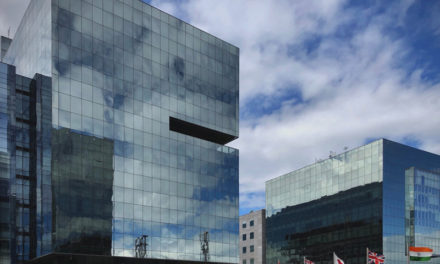Thank God It’s…….. Monday!!
Amit is at his wits end.
He has lately taken up an initiative on “Fun at Work” and has been trying very hard at it for last 8 months. He has been reading a lot about how to make your workplace fun, how to motivate the employees in a stressful job like software development and how to make the environment friendly and energetic.
Amit heads the HR in a mid size software company in India which has more than 2000 employees and more than $50 Million in annual revenues.
He had recently assigned one of his managers to form a fun club which will have volunteers who will focus on fun activities and team activities which will increase the feeling of “fun at workplace”. He has spent a lot of money on fun activities, fought with the business to arrange picnics on business days and not on weekends, and in his opinion has done everything he can. In the last 1 year, the company has had activities like family day, children day at office, music competitions, hiking trips and breakout sessions in resorts with lots of games.
He even had the chairman modify the core values of their company to include “have fun at work”. He also pushed for a hike in benefits and salaries and he has ensured that the salary levels are a little higher than the average mid size companies.
However in a recently conducted employee satisfaction survey administered recently by a third party, the employee satisfaction score was a dismal 2.8. The attrition rate at 24%is significantly above the industry average figure. The average tenure of the employee was 2.3 years.
The same third party survey also revealed that more than 40% employees felt that the work environment was political, that more than 35% of the employees did not feel respected, that more than 40% of the employees felt their manager did not add any value to them, and more than 30% did not have a good understanding of how their work was impacting the overall company’s growth.
Amit is at his wits end and is thinking about his friend Dhanraj for some answers to his dilemma.
Dhanraj is the CEO of another IT company which is of a similar size. Dhanraj has been with the company for last 15 years. They drives their employees hard, pay them at par with their peers, do not have the word fun mentioned anywhere in its core values, and does not have any budget assigned for fun activities in its HR budget.
Their focus is to hire employees who love their work, feel passionately about it and are committed to continuous growth. The focus is to provide them an environment with enough growth opportunities for horizontal and vertical growth. The HR and business teams work together tightly to ensure a resonance between an employee’s competence, his career goals, requirements of the role he is assigned to, and goals and targets of the division and company. Regular reviews and job rotations ensure a minimum level of alignment and makes the work culture rewarding and fulfilling for the employee.
The company is well known for the non political high growth work culture and is able to attract talent in spite of the average salaries it pays.
The average tenure of an employee in Dhanraj’s company is 5 years and the attrition rate is less than 10%.
The global business environment and the work place has dramatically transformed in the last 30 years with emergence of a diverse economy with several new age businesses like media, finance, services, technology, entertainment. These industries employ a young workforce with a very different ideas of work and motivation as compared to the traditional workforce of the manufacturing centered economy.
In the new economy, the command control structures of manufacturing economy do not work as the workforce has become highly mobile, and the output requires a high degree of mental involvement from the workforce
.
The management is constantly grappling with the challenges of engaging the workforce to maximize their retention and their productivity.
“Fun at Work” is the latest mantra nowadays and organizations globally are going crazy to figure out how they can motivate their employees to have fun at work
There are thousands of consultants who are hired by companies to hold “motivation seminar” and are paid high consulting fees to come up with ideas on how to make the work place fun filled and full of energy.
A large number of companies take up this initiatives as a knee jerk reaction or when they are doing well. As the pendulum swings to other extreme in a recessionary times, this initiatives are dropped like a hot potato and budgets cut down.
In the desire to create a fun filled workplace and a workforce which is having fun at work, most companies are missing the woods for the trees and end up treating the symptom rather than the malady.
Fun at work is an expression of the love and commitment of your employee to his work. It cannot be an end in itself and it can not be artificially induced from above by expanding the “recreation budgets” if the core structure of work practices and performance measurement is not aligned with employee growth and employee competence.
The driving ingredient which actually decides whether your average employee can have “fun at work” is his level of commitment to his work and his love and passion for his work. If your average employee does not love his work, does not have a high degree of commitment to it, does not care enough about doing his best on the job, then no amount of extra fun activities will induce him to do it. If this commitment exists above a certain threshold level, then the “fun activities” become a good, sometimes necessary, catalyst to strengthen the team spirit, reduce the work stress, and reinforce the overall relationships between colleagues.
If the commitment and passion to work does not exist or is below an average level,
the fun activities become just another forum for gossiping and airing cynical comments about the work morale.
A lot of organizations approach the concept with a mindset of “work is boring, how do we make it fun”. If the alignment of individual competence and work assignment is done right and an appropriate culture is nurtured, the daily work can be a source of growth, joy and enrichment to oneself. The fun activities then become an extension of your work and not something which is you look forward to because your work is a chore.
Majority of the young work force entering the industry today is ambitious, motivated and raring to go. Their energies, if harnessed appropriately, can be a source of quantum growth for the organization.
Commitment to work and passion for your work is a difficult parameter to measure and quantify. It is a constant struggle for any company to measure this effectively, and focus on consistent improvement on this front.
What you like to do most, what you are trained to do well, what you can actually do very well, and what your company needs in the short and long term are all different conversations.
The companies which are able to achieve a resonance between these for majority of its employees have a workforce which has the most fun at work, not the companies which have the largest recreation budget.
The question is NOT how can your people have fun at work but how many of them are TGIM people and not TGIF people?










